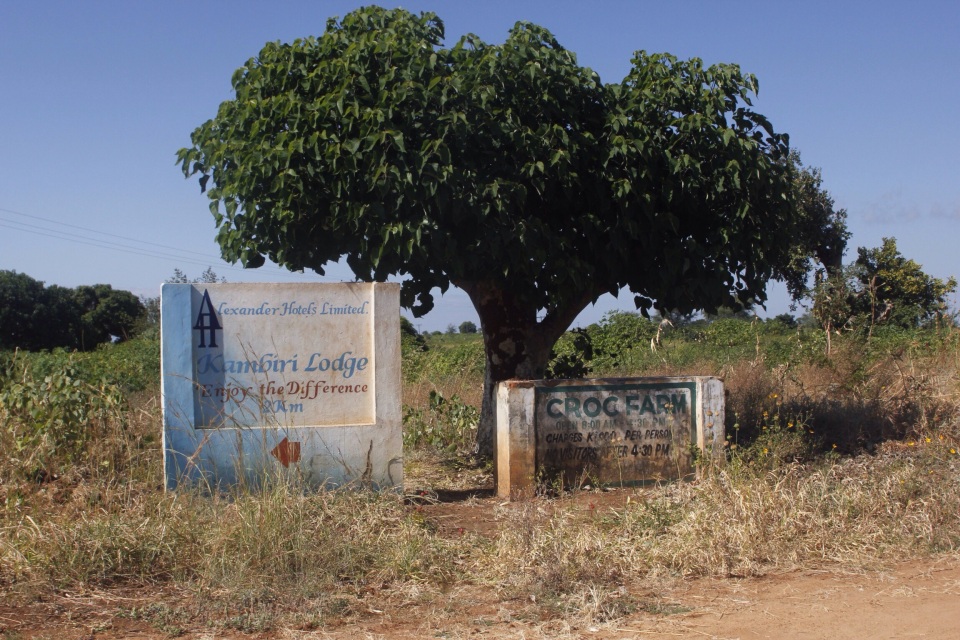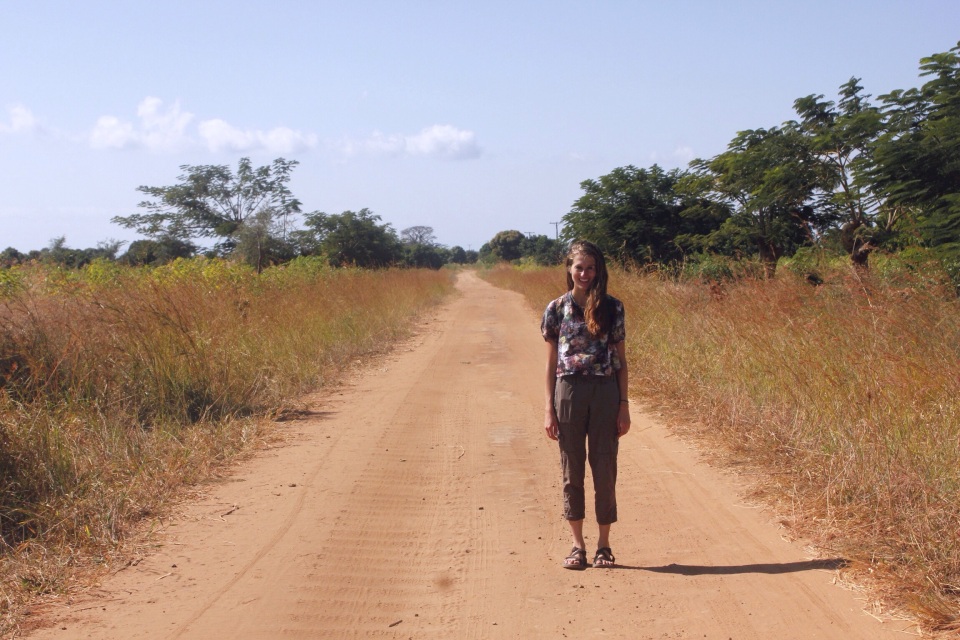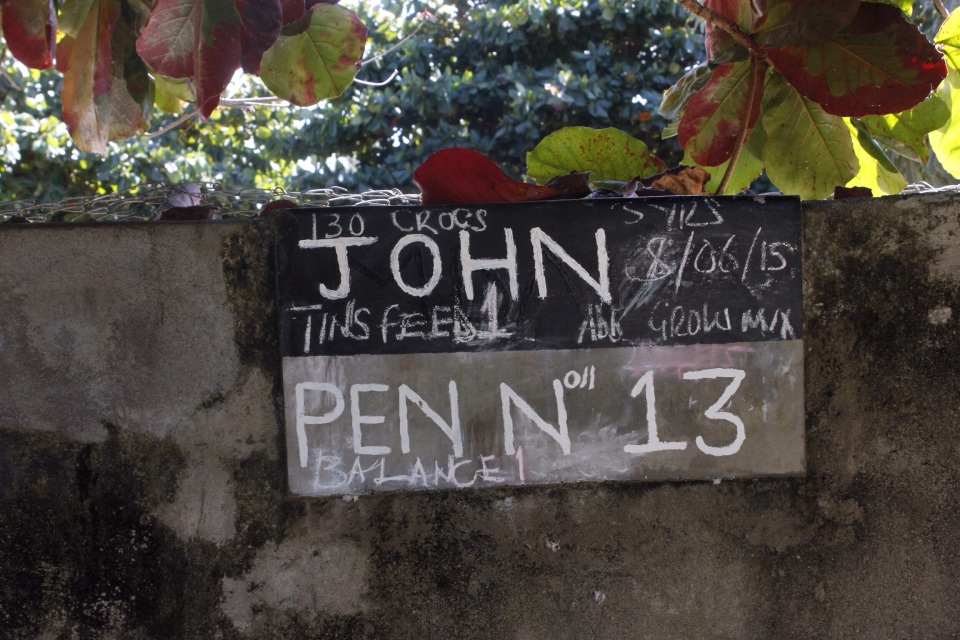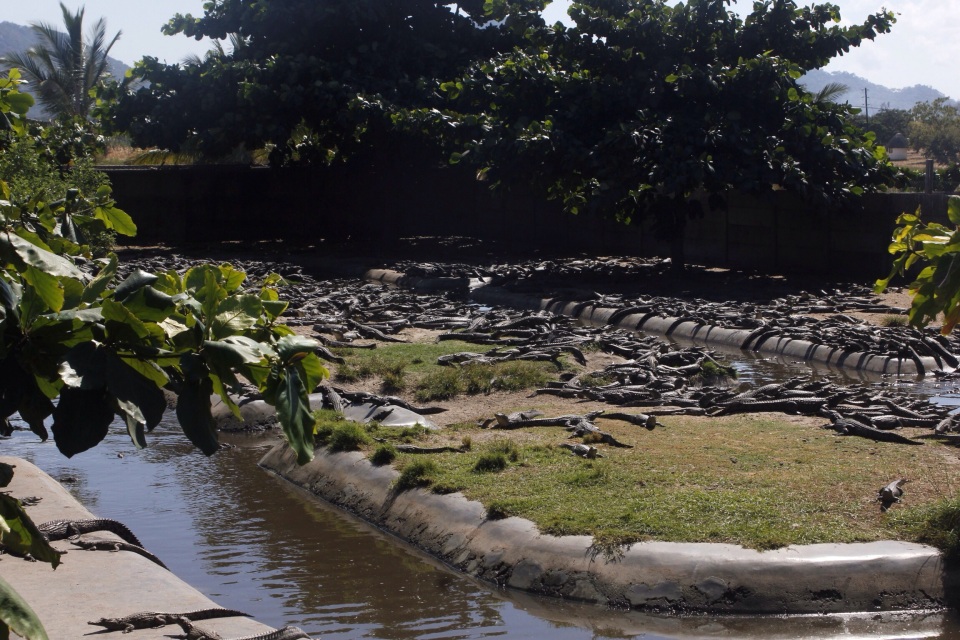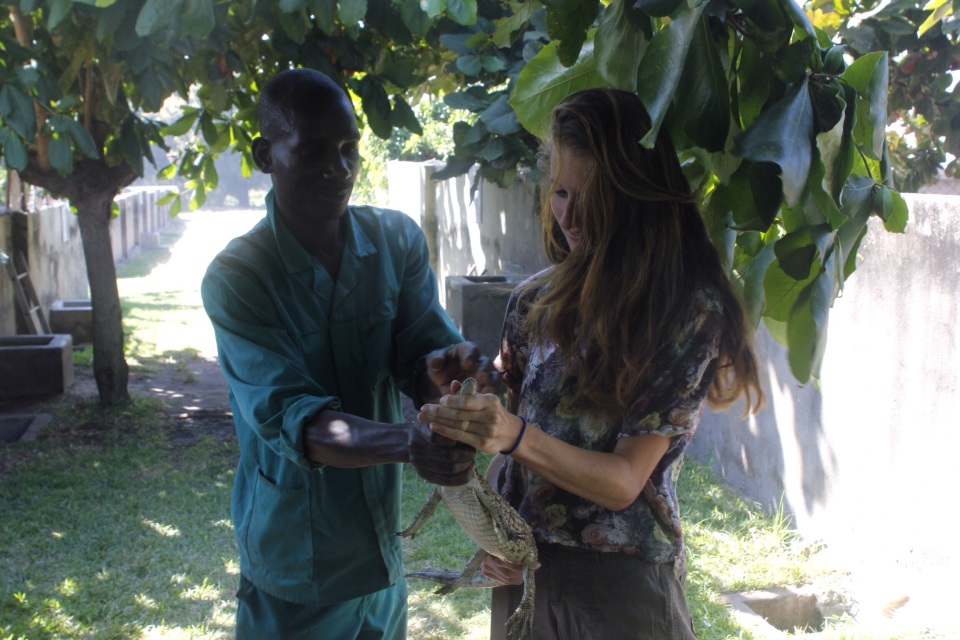Crocodile Hunters
Today we were crocodile hunters, Crocodile Dundee would be proud.
We woke up at the break of dawn as usual, but this time without the crow of a cock to frighten us from under our covers. We packed our day packs and set off on our journey to find the sought-after crocodile farm somewhere within 20 kilometers of where we were staying.
We stopped of at the local village to buy fruit, fresh bread, and popcorn puffs for the journey and set out on the long walk down the road. When you are mazungo (white) and you walk down the road EVERYONE asks you if you want a ride.
We like to walk and talk with the villagers so we always respond no. Everything a villager would walk by on the road we would ask, “crocodile farm?”, and they would point is further ahead down the road.
At one point we turned off the road onto a little dirt road marked “Kambiri Lodge” on a little wooden sign. We walked down the dirt road for about an hour before reaching an old overgrown brick sign on the ground that said croc farm with an arrow pointing to the right. A newcomer to Africa would have thought that the place was abandoned years ago due to the condition of the sign, but we knew that the facility was probably still there.
Thirty minutes later we arrived at a poorly gated facility at the end of the road. No signs were around, but we knew it was the only likely place the farm could be. We were greeted at the gate by Goliath, one of the croc hunters on the team. He agreed to take us around and our journey began.
The farm was home to over 20,000 crocs that were captured from the wild or bred in their facilities! A team of thirty raises and cares for the crocs until they are old enough to slaughter and sell the skin and the meet. The meat they sell for around $1/pound to locals throughout Africa, and the skin they sell for $25-$30 per square centimeter to venders in Italy, Germany, France, the USA, and South Africa. With over 20,000 crocodiles you can imagine the profit that someone is making…
They feed the Crocodiles over one ton of live chickens each day, from which they buy in bulk from Lilongwe. Andrew informed me that crocodiles do not have the ability to break down animals in their stomachs so they have to eat rocks to help in the grinding process. Come to find out, Andrew grew up watching discovery channel and his favorite episodes were those with the crocodile hunter.
At the end of our visit Goliath gave us a large crocodile tooth and directions back to the beach, which we followed all the way back to cool runnings. It was a beautiful day.
(Below: Andrew’s post)
Lately I’ve been reading one of Kylie’s books, ‘Poor Economics’ which discusses the theories of why poor individuals remain poor and how best to help.
The two most common arguments come from opposite view points, one saying that people need foreign aid to elevate them behind the poverty trap, thus you free them and they can finally obtain a better life. The second view argues that aid is damaging, and societies need to be the driving force behind getting people out of poverty.
I’ve definitely seen evidence of both arguments and solutions, but primarily here in Malawi I believe the second. Communities need to be the driving force behind economic liberty, and handouts aren’t going to resolve ingrained issues.
Senga Bay is a beautiful place, and that goes doubly for the people. Kylie and I have had the chance to wander the local streets, and mini market that make up much of Senga Bay village (we love doing this). The entire village is built on rust colored sand that is extremely soft to walk on. The homes are all simple brick structures. Only some are painted.
Senga bay is known for beautiful beaches, nice people, and of course, the crocodile farm and hippo sanctuary. Excited to explore what our weekend vacation spot had to offer, Kylie and I set out to find the crocodile farm. Since cash on hand was low, we decided to walk to the ATM, nearly 4km from the village.
Malawi, and most of Africa is a strictly cash based society. No cash, no transport, no food, no nothing! So you can imagine our unfortunate when the ATM wasn’t working and I couldn’t withdraw money from my card. We had enough for our stay and ride back, but I was worried we wouldn’t get to see anything besides our backpacker lodge! After a prayer or two we managed to get my backup card working… Phew, and we were off to the crocodile farm. Another 7km from the bank.
We walked and talked, and the hour journey went by quickly until we were greeted by the manager of the croc farm, Goliath.
The croc farm had over 20,000 crocodiles of various size, age, and as we would learn ‘grade of skin.’crocodiles are a very profitable industry in Malawi. One square centimeter of croc skin is valued at $25 USD. With each croc selling for ~1.5 million Malawi kwacha or $3500 USD.
Crocodiles are also graded on the quality of their hide, much like his tobacco leaves are graded on their color (I didn’t know that before reading the book ‘The Boy Who Harnessed the Wind’). Scratches, rips, or marks lower the quality and the crocs are sorted accordingly.
Even though it seems like a very profitable industry, taking care of the crocs is a long process. The crocs must reach the age of 3-4 years before they’re ready and that takes a lot of feeding. The many croc pens we visited (filled with thousands of crocs) required tons of chicken each week to keep them healthy.
While I can’t condone the killing of crocs just for belts or handbags, I found it fascinating to learn about an entirely new industry. However, the most insightful thing I learned, was about Goliath and his decision to enter the croc farming industry.
Goliath used to be driver, but since drivers compete on price and volume, he quickly found himself looking for new work. He found himself in the croc industry out of happenstance more than choice, but never looked back. Even if most of the profits are going to the farm owner, managers don’t do too badly themselves.
We left the croc farm with a wealth of knowledge we didn’t have before and made our way back to Cool Runnings Lodge via the beach.
Just before turning into the lodge area, we decided to continue along the beach to see the local fishermen.
Hundreds of them were parked on the beach, fishing nets in hand, and boats to their backs as they waited for the wind and waves (yes there are waves on lake Malawi) to tell them when to go out.
We watched as several fishermen pulled onto shore yelling to everyone to come see their catch. Then the bidding began. Fish can sell for 500 kwacha a piece (a little over 1 USD) and the small ones for half that price. But in order to get out far enough where the fishing is good, the fishermen often have to catch a lift out via a larger boat which can cost 10,000 kwacha for the tow.
Our curiosity led Kylie and I to stop one of the fisherman to ask him questions. Interestingly, we learned that most of the fish in Singah bay is sent to Lilongwe to be sold. However, it isn’t sold fresh, but dried as they have no way of transporting the fish such a far distance without a cooler.
Today’s been an interesting adventure, mostly because of everything we’ve learned! Hope we continue to learn more as time goes on!
